- Clone
- HA58 (See other available formats)
- Regulatory Status
- RUO
- Workshop
- HCDM listed
- Other Names
- ICAM-1, Ly-47
- Isotype
- Mouse IgG1, κ
- Ave. Rating
- Submit a Review
- Product Citations
- publications
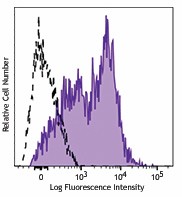
-

Human peripheral blood lymphocytes were stained with CD54 (clone HA58) Alexa Fluor® 647 (filled histogram) or mouse IgG1, κ Alexa Fluor® 647 isotype control (open histogram). -

Confocal image of human spleen sample acquired using the IBEX method of highly multiplexed antibody-based imaging: CD21 (red) in Cycle 1 and CD54 (blue) in Cycle 1. Tissues were prepared using ~1% (vol/vol) formaldehyde and a detergent. Following fixation, samples are immersed in 30% (wt/vol) sucrose for cryoprotection. Images are courtesy of Drs. Andrea J. Radtke and Ronald N. Germain of the Center for Advanced Tissue Imaging (CAT-I) in the National Institute of Allergy and Infectious Diseases (NIAID, NIH). -

Confocal image of human liver sample acquired using the IBEX method of highly multiplexed antibody-based imaging: CD54 (cyan) in Cycle 1 and CD138 (purple) in Cycle 2. Tissues were prepared using ~1% (vol/vol) formaldehyde and a detergent. Following fixation, samples are immersed in 30% (wt/vol) sucrose for cryoprotection. Images are courtesy of Drs. Andrea J. Radtke and Ronald N. Germain of the Center for Advanced Tissue Imaging (CAT-I) in the National Institute of Allergy and Infectious Diseases (NIAID, NIH). -

Confocal image of human jejunum sample acquired using the IBEX method of highly multiplexed antibody-based imaging: Hoechst (blue) in Cycle 1, CD54 (green) in Cycle 1, and Vimentin (magenta) in Cycle 6. Tissues were prepared using ~1% (vol/vol) formaldehyde and a detergent. Following fixation, samples are immersed in 30% (wt/vol) sucrose for cryoprotection. Images are courtesy of Drs. Andrea J. Radtke and Ronald N. Germain of the Center for Advanced Tissue Imaging (CAT-I) in the National Institute of Allergy and Infectious Diseases (NIAID, NIH).
| Cat # | Size | Price | Quantity Check Availability | Save | ||
|---|---|---|---|---|---|---|
| 353113 | 25 tests | 95€ | ||||
| 353114 | 100 tests | 212€ | ||||
CD54 is a 85-110 kD type I transmembrane protein also known as ICAM-1. It is expressed on activated endothelial cells, high endothelial venules, T and B cells, monocytes/macrophages, granulocytes, and dendritic cells. The expression of ICAM-1 can be released from the cell surface. CD54 plays a role in cellular adhesion and is involved in inflammation and leukocyte extravasation. CD54 has also been shown to be the major cellular receptor for rhinovirus. ICAM-1 binds to CD11a/CD18 (LFA-1), CD11b/CD18 (Mac-1), CD11c/CD18 (p150, 95) as well as hyaluronan and fibrinogen.
Product DetailsProduct Details
- Verified Reactivity
- Human
- Antibody Type
- Monoclonal
- Host Species
- Mouse
- Immunogen
- Colonic cancer BM314 cells
- Formulation
- Phosphate-buffered solution, pH 7.2, containing 0.09% sodium azide and BSA (origin USA)
- Preparation
- The antibody was purified by affinity chromatography and conjugated with Alexa Fluor® 647 under optimal conditions.
- Concentration
- Lot-specific (to obtain lot-specific concentration and expiration, please enter the lot number in our Certificate of Analysis online tool.)
- Storage & Handling
- The antibody solution should be stored undiluted between 2°C and 8°C, and protected from prolonged exposure to light. Do not freeze.
- Application
-
FC - Quality tested
SB - Reported in the literature, not verified in house - Recommended Usage
-
Each lot of this antibody is quality control tested by immunofluorescent staining with flow cytometric analysis. For flow cytometric staining, the suggested use of this reagent is 5 µl per million cells in 100 µl staining volume or 5 µl per 100 µl of whole blood.
* Alexa Fluor® 647 has a maximum emission of 668 nm when it is excited at 633 nm / 635 nm.
Alexa Fluor® and Pacific Blue™ are trademarks of Life Technologies Corporation.
View full statement regarding label licenses - Excitation Laser
-
Red Laser (633 nm)
- Application Notes
-
Clone HA58 recognizes an epitope located in the extracellular D1 domain of CD543. Additional reported applications (for the relevant formats) include: spatial biology (IBEX)4,5.
- Additional Product Notes
-
Iterative Bleaching Extended multi-pleXity (IBEX) is a fluorescent imaging technique capable of highly-multiplexed spatial analysis. The method relies on cyclical bleaching of panels of fluorescent antibodies in order to image and analyze many markers over multiple cycles of staining, imaging, and, bleaching. It is a community-developed open-access method developed by the Center for Advanced Tissue Imaging (CAT-I) in the National Institute of Allergy and Infectious Diseases (NIAID, NIH).
- Application References
- RRID
-
AB_2715941 (BioLegend Cat. No. 353113)
AB_2715942 (BioLegend Cat. No. 353114)
Antigen Details
- Structure
- Type I membrane protein, Ig superfamily, 85-110 kD
- Distribution
-
Endothelial cells, T cells and B cells, monocytes/macrophages, granulocytes, and dendritic cells
- Cell Type
- B cells, Dendritic cells, Endothelial cells, Granulocytes, Macrophages, Mesenchymal Stem Cells, Monocytes, T cells
- Biology Area
- Cell Adhesion, Cell Biology, Costimulatory Molecules, Immunology, Neuroscience, Neuroscience Cell Markers, Stem Cells
- Molecular Family
- Adhesion Molecules, CD Molecules
- Antigen References
-
1. Voraberger G, et al. 1991. J. Immunol. 147:2777.
2. Staunton DE, et al. 1988. Cell 52:925.
3. Greve JM, et al. 1989. Cell 56:839. - Gene ID
- 3383 View all products for this Gene ID
- UniProt
- View information about CD54 on UniProt.org
Related FAQs
- If an antibody clone has been previously successfully used in IBEX in one fluorescent format, will other antibody formats work as well?
-
It’s likely that other fluorophore conjugates to the same antibody clone will also be compatible with IBEX using the same sample fixation procedure. Ultimately a directly conjugated antibody’s utility in fluorescent imaging and IBEX may be specific to the sample and microscope being used in the experiment. Some antibody clone conjugates may perform better than others due to performance differences in non-specific binding, fluorophore brightness, and other biochemical properties unique to that conjugate.
- Will antibodies my lab is already using for fluorescent or chromogenic IHC work in IBEX?
-
Fundamentally, IBEX as a technique that works much in the same way as single antibody panels or single marker IF/IHC. If you’re already successfully using an antibody clone on a sample of interest, it is likely that clone will have utility in IBEX. It is expected some optimization and testing of different antibody fluorophore conjugates will be required to find a suitable format; however, legacy microscopy techniques like chromogenic IHC on fixed or frozen tissue is an excellent place to start looking for useful antibodies.
- Are other fluorophores compatible with IBEX?
-
Over 18 fluorescent formats have been screened for use in IBEX, however, it is likely that other fluorophores are able to be rapidly bleached in IBEX. If a fluorophore format is already suitable for your imaging platform it can be tested for compatibility in IBEX.
- The same antibody works in one tissue type but not another. What is happening?
-
Differences in tissue properties may impact both the ability of an antibody to bind its target specifically and impact the ability of a specific fluorophore conjugate to overcome the background fluorescent signal in a given tissue. Secondary stains, as well as testing multiple fluorescent conjugates of the same clone, may help to troubleshoot challenging targets or tissues. Using a reference control tissue may also give confidence in the specificity of your staining.
- How can I be sure the staining I’m seeing in my tissue is real?
-
In general, best practices for validating an antibody in traditional chromogenic or fluorescent IHC are applicable to IBEX. Please reference the Nature Methods review on antibody based multiplexed imaging for resources on validating antibodies for IBEX.
Other Formats
View All CD54 Reagents Request Custom Conjugation| Description | Clone | Applications |
|---|---|---|
| Purified anti-human CD54 | HA58 | FC,ICC,IHC |
| PE anti-human CD54 | HA58 | FC |
| FITC anti-human CD54 | HA58 | FC |
| Pacific Blue™ anti-human CD54 | HA58 | FC |
| APC anti-human CD54 | HA58 | FC |
| Alexa Fluor® 647 anti-human CD54 | HA58 | FC,SB |
| PE/Dazzle™ 594 anti-human CD54 | HA58 | FC |
| APC/Fire™ 750 anti-human CD54 | HA58 | FC |
| PE/Cyanine7 anti-human CD54 | HA58 | FC |
| PerCP/Cyanine5.5 anti-human CD54 | HA58 | FC |
| TotalSeq™-A0217 anti-human CD54 | HA58 | PG |
| Alexa Fluor® 700 anti-human CD54 | HA58 | FC |
| TotalSeq™-C0217 anti-human CD54 | HA58 | PG |
| Alexa Fluor® 488 anti-human CD54 | HA58 | FC |
| Brilliant Violet 421™ anti-human CD54 | HA58 | FC |
| Ultra-LEAF™ Purified anti-human CD54 | HA58 | FC,ICC,IHC-F |
| TotalSeq™-B0217 anti-human CD54 | HA58 | PG |
| TotalSeq™-D0217 anti-human CD54 | HA58 | PG |
| Brilliant Violet 711™ anti-human CD54 | HA58 | FC |
Customers Also Purchased
Compare Data Across All Formats
This data display is provided for general comparisons between formats.
Your actual data may vary due to variations in samples, target cells, instruments and their settings, staining conditions, and other factors.
If you need assistance with selecting the best format contact our expert technical support team.
-
Purified anti-human CD54
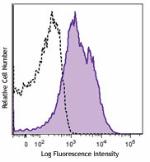
Human peripheral blood lymphocytes were stained with CD54 (c... 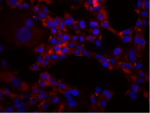
MDA-MB435 breast cancer cell line was stained with anti-huma... -
PE anti-human CD54

Human peripheral blood lymphocytes were stained with CD54 (c... -
FITC anti-human CD54
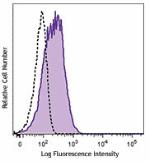
Human peripheral blood lymphocytes were stained with CD54 (c... -
Pacific Blue™ anti-human CD54
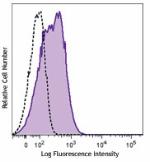
Human peripheral blood lymphocytes were stained with CD54 (c... -
APC anti-human CD54
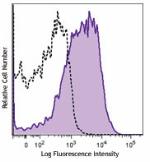
Human peripheral blood lymphocytes were stained with CD54 (c... -
Alexa Fluor® 647 anti-human CD54
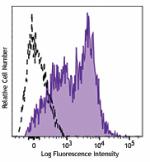
Human peripheral blood lymphocytes were stained with CD54 (c... 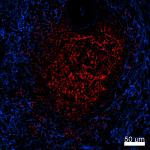
Confocal image of human spleen sample acquired using the IBE... 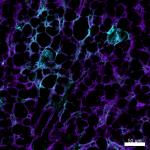
Confocal image of human liver sample acquired using the IBEX... 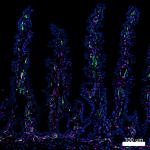
Confocal image of human jejunum sample acquired using the IB... -
PE/Dazzle™ 594 anti-human CD54
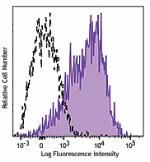
Human peripheral blood lymphocytes were stained with CD54 (c... -
APC/Fire™ 750 anti-human CD54
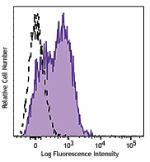
Human peripheral blood lymphocytes were stained with CD54 (c... -
PE/Cyanine7 anti-human CD54
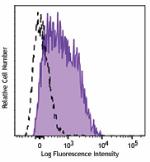
Human peripheral blood lymphocytes were stained with CD54 (c... -
PerCP/Cyanine5.5 anti-human CD54
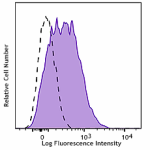
Human peripheral blood lymphocytes were stained with CD54 (c... -
TotalSeq™-A0217 anti-human CD54
-
Alexa Fluor® 700 anti-human CD54
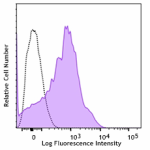
Human lysed whole blood stained with human CD54 (clone HA58)... -
TotalSeq™-C0217 anti-human CD54
-
Alexa Fluor® 488 anti-human CD54

Human peripheral blood lymphocytes stained with human CD3 Br... -
Brilliant Violet 421™ anti-human CD54
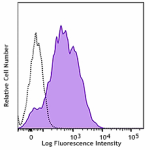
Human peripheral blood lymphocytes were stained with CD54 (c... -
Ultra-LEAF™ Purified anti-human CD54
-
TotalSeq™-B0217 anti-human CD54
-
TotalSeq™-D0217 anti-human CD54
-
Brilliant Violet 711™ anti-human CD54

Human peripheral blood lymphocytes stained with anti-human C...
 Login / Register
Login / Register 










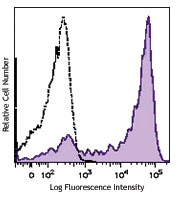
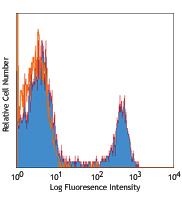

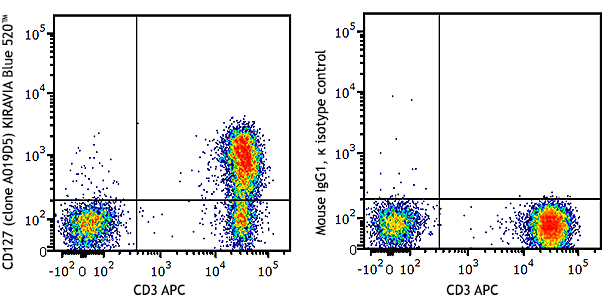



Follow Us